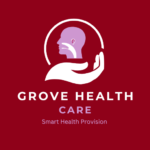A skin prick test (SPT) is a common diagnostic tool used to identify allergies.
Here’s a step-by-step guide on how it’s done:
Preparation
-
1. Patient preparation
The patient should avoid taking antihistamines, steroids, and other medications that may interfere with the test results for a specified period, usually 3-5 days.
-
2. Selection of allergens
The healthcare provider selects a range of common allergens, such as pollen, dust mites, mold, pet dander, and foods, based on the patient's medical history and symptoms.
The Test
-
1. Cleaning the skin
The skin on the forearm or back is cleaned with alcohol.
-
2. Placing the allergens
Small drops of each allergen extract are placed on the skin, usually in a grid pattern.
-
3. Pricking the skin
A small, sterile prick or lancet is used to gently prick the skin through each drop, introducing a tiny amount of the allergen into the skin.
-
4. Waiting for a reaction
The skin is observed for 15-20 minutes to see if a reaction occurs.
Interpreting the Results
-
1. Positive reaction
A raised, itchy, red bump (wheal) indicates a positive reaction to the allergen.
-
2. Negative reaction
No reaction or a small, flat bump indicates a negative result.
-
3. Interpretation
The healthcare provider interprets the results, taking into account the patient's medical history and symptoms.
Safety Precautions
-
1. Monitoring
The patient is monitored for any severe reactions, such as anaphylaxis.
-
2. Emergency equipment
Emergency equipment, such as epinephrine injectors, is available in case of a severe reaction.
The skin prick test is a safe and effective way to diagnose allergies. If you have any concerns or questions, be sure to discuss them with your healthcare provider.
Share Post On:
Recent Posts
-
Technique of Incision and Drainage of Septal Hematoma/Septal Abscess
-
Upper Aerodigestive Tract Foreign Body Impaction
-
Incision and Drainage of Hematoma Auris
-
Rigid Bronchoscopy for Retrieval of Foreign Bodies in Children
-
Foreign Body Impaction in the Larynx, Trachea, and Bronchi
-
Leadership Position is a Tool, not a Trophy
-
Carcinoma of the Oropharynx
-
Peritonsillar Abscess
-
Ethics of Doctor-Patient Relationship
-
Doctor-Patient Relationship Case Scenarios
-
Asymmetrical Tonsils and Approach to Evaluation and Management
-
Nasal Polyposis
Categories
Get in Touch
Read doctor-produced health and medical information written for you to make informed decisions about your health concerns.


